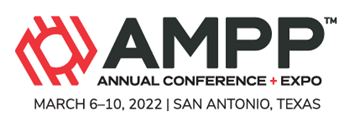Search
Online Conference Paper
View as
Sort by
Display
per page
Synergistic Effect of Magnetite-Enriched Rust Layer and Sulfate Reducing Bacteria on Pipeline Steel Corrosion in Oilfield Produced Water
Product Number:
51324-20769-SG
Publication Date:
2024
$40.00
Synthesis of Aminopropyl-modified Silica with Hydrophilic Branches Inhibitor for Corrosion Inhibition
Product Number:
51324-20630-SG
Publication Date:
2024
$40.00
Synthesis of Silane-Modified Nanoparticles-Based Corrosion Inhibitor for Acidic Corrosion
Product Number:
51323-18882-SG
Publication Date:
2023
$20.00
Systematic Approach toward Damage Mechanism Reviews and Mechanical Integrity Improvements for Ammonia Synthesis and Fertilizer Facilities
Product Number:
51323-19349-SG
Publication Date:
2023
$20.00
Systematic Risk Evaluation of Calcium Sulfate Formation in Production System
Product Number:
51323-19511-SG
Publication Date:
2023
$20.00
Tafel-Piontelli model for the prediction of the corrosion rate of active metals in weakly acidic environments. Application to sweet corrosion in the Oil and Gas industry
Product Number:
51323-19254-SG
Publication Date:
2023
$20.00
Tank Waste And Ground Water Effects On The Corrosion Susceptibility Of The Secondary Liner Of Hanford Double-Shell Tanks
Product Number:
51322-17550-SG
Publication Date:
2022
$20.00
Technical Review on the Existence of Type B (Alumina) Inclusion at Hot Steel Making Process
Product Number:
MPWT19-15601
Publication Date:
2019
$0.00
Techniques for Inspecting Wall Thickness Metal Loss of Pipelines under Nonmetallic Sleeves
Product Number:
MPWT19-14377
Publication Date:
2019
$0.00
Technology Advancements for Electrochemical Protection Systems of Reinforced Concrete Structures, Across Australia
Product Number:
51323-18881-SG
Publication Date:
2023
$20.00
Tele-Inspection Nondestructive Evaluation for Corrosion Applications
Product Number:
51323-19085-SG
Publication Date:
2023
$20.00
Test Protocol for Assessing the Sulfide Stress Cracking Resistance of Low Alloyed Steels in High Temperature High Pressure Sour Environments
Product Number:
51320-14588-SG
Publication Date:
2020
$20.00












